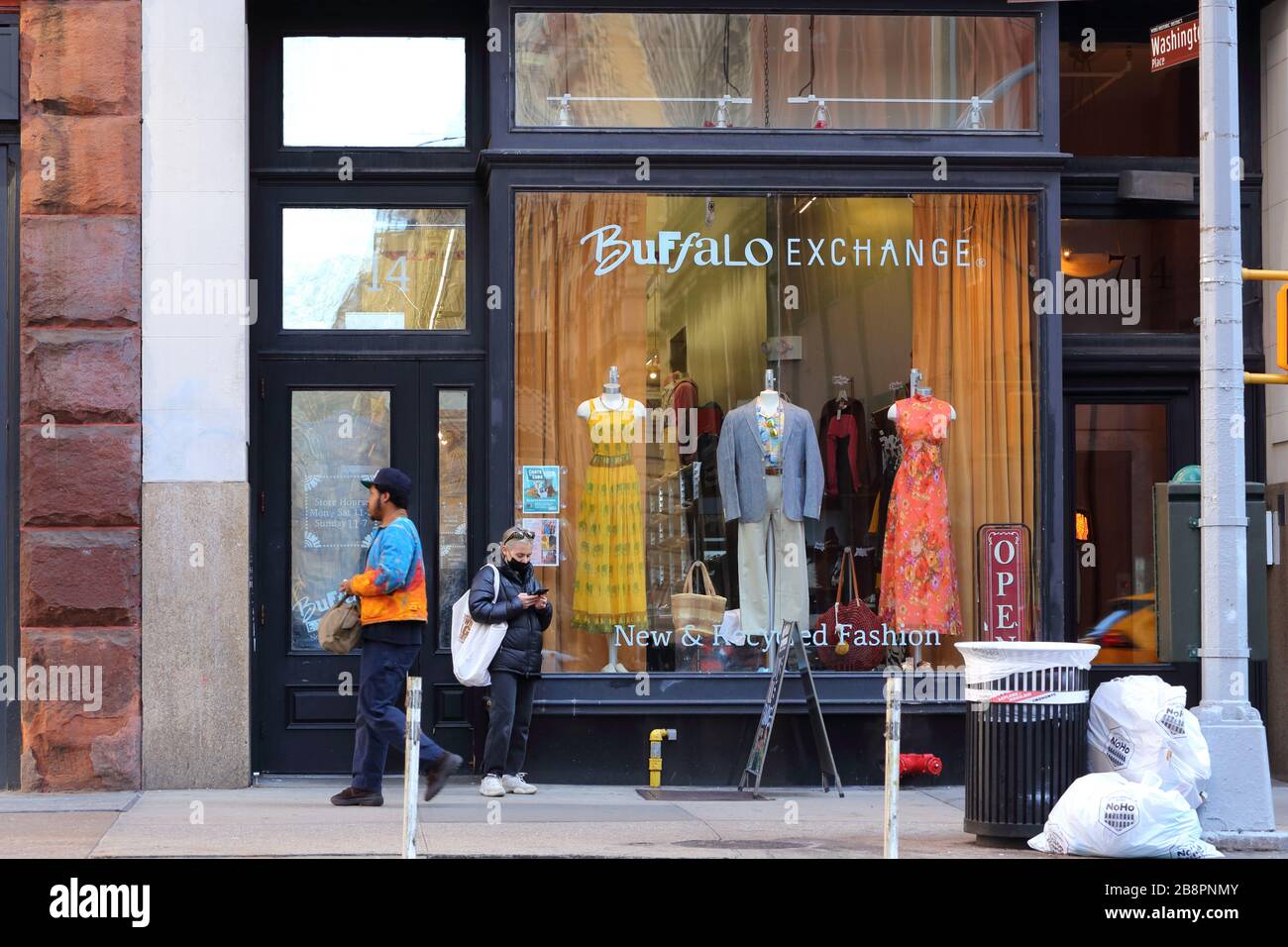I’ve spent the better part of a decade hunting racks from SoHo to Jackson Heights, and I know exactly where to find second-hand fashion in NYC that delivers style, value, and authenticity. From curated designer consignment to warehouse-style thrift, I’ve tested the city’s best options, learned a few lessons the hard way, and refined a strategy that consistently yields standout finds. If you want a practical roadmap that balances insider tips with data-backed advice, you’re in the right place.

Source: www.viator.com
How NYC’s Second-Hand Fashion Ecosystem Works
New York’s resale scene is a living network of small boutiques, charity shops, curated consignment, flea markets, and app-based sellers who meet up in public spots. Inventory turns fast, pricing varies by neighborhood, and the best pieces often never hit the floor. Understanding how these channels work helps you shop smarter.
Here’s the lay of the land:
- Thrift stores deliver the lowest prices and the widest size range, but require patience and time.
- Vintage boutiques curate by era or aesthetic and command higher prices for rare or pristine items.
- Consignment shops focus on contemporary and luxury brands, with authentication and seasonal selections.
- Flea markets, estate sales, and sample sales reward early birds with unique pieces at bargain prices.
- Online resale apps with local pickup help you snag deals without digging through racks.
Data from recent resale industry reports show sustained double-digit growth in second-hand apparel, with New York as a top market for high-value consignments and vintage. For shoppers, that means better selection than ever—and more competition—so timing and strategy matter.

Source: insideretail.us
Best Neighborhoods For Thrifting And Vintage
After hundreds of store visits, I’ve mapped where to find second-hand fashion in NYC across boroughs. These areas consistently deliver quality, selection, and value:
- Lower East Side and East Village: Indie vintage, playful Y2K, 90s streetwear, band tees, and avant-garde pieces pop up here.
- Williamsburg and Greenpoint: Curated vintage, denim, workwear, Scandinavian minimalism, and higher-end street labels.
- Bushwick and Ridgewood: Budget-friendly thrift mixed with niche vintage vendors; great for experimental styling.
- SoHo and Nolita: Designer consignment and contemporary labels, excellent for statement pieces and accessories.
- Chelsea and Flatiron: Luxury consignment and dependable mid-tier brands for office-to-evening wardrobes.
- Upper East Side and Upper West Side: Classic luxury, tailored pieces, and special-occasion wear in superior condition.
- Astoria and Long Island City: Balanced selection, often lower prices than Manhattan; strong outerwear and denim.
- Jackson Heights and Sunnyside: Unexpected vintage gems and global brands; often the best bang for your buck.
Personal tip: I schedule neighborhood “loops” and hit 3 to 5 stores in one go. Inventory styles cluster by area, so you’ll refine your eye faster and build a mental price map.

Source: www.amazon.com
Thrift Stores And Charity Shops: Big Wins On Small Budgets
For everyday basics, athletic wear, denim, and layering pieces, I start with thrift. It’s the easiest way to build a sustainable wardrobe on a budget.
What to look for:
- Denim and workwear: Search men’s racks for quality selvedge or made-in-USA labels; try two sizes up and tailor.
- Natural fibers: Scan tags quickly for wool, silk, linen, cotton, and cashmere.
- Quality cues: Check stitching density, spare buttons, fully lined jackets, and metal zippers.
- Outerwear: New Yorkers donate excellent coats; late winter is prime time for markdowns.
- Kidswear and home textiles: Often lightly used and priced low.
Mistakes to avoid:
- Skipping the fitting room. Thrift sizing varies wildly across decades and brands.
- Ignoring small repairs. A five-dollar sweater is not a deal if you’ll never fix the hole.
- Overlooking men’s and kids’ sections, which often hide unclaimed treasures.
Pro move I use: Bring a foldable tote and a small fabric shaver. A quick de-pill can help you visualize the true potential of knits before you buy.

Source: www.alamy.com
Curated Consignment: Contemporary And Designer Finds
When I need a polished blazer, a special-occasion dress, or authenticated designer accessories, I go consignment. Prices are higher than thrift, but you get verified labels, careful condition grading, and often, a generous return policy.
How to shop consignment effectively:
- Ask about new arrivals and hold lists. Many stores text clients when specific brands or sizes land.
- Learn the discount cycle. Some shops markdown at 30/60/90 days, which is perfect for strategic returns.
- Authenticate wisely. Look for in-house experts, serial numbers, micro-stitching details, and consistent hardware weight.
- Don’t ignore menswear. NYC consignment often carries incredible men’s tailoring, loafers, and outerwear that resell quickly.
I once found a pristine Italian wool overcoat for a fraction of retail because it hit the 60-day mark and the season was shifting. Timing beats luck in consignment.
Vintage Boutiques By Era And Style
Vintage in NYC is about storytelling. Shops often specialize, so you can target your search by decade and vibe.
Where you’ll win:
- 60s–70s bohemian: Maxi dresses, suede, fringe, and crochet in East Village and Williamsburg.
- 80s power dressing: Structured blazers, silk blouses, and statement belts in Chelsea and UES.
- 90s minimalist: Slip dresses, bias-cut skirts, and black-on-black tailoring in Nolita and Greenpoint.
- Y2K streetwear: Track jackets, logo tees, and low-rise denim in LES and Bushwick.
- Workwear and military: Chore coats, fatigue pants, and utility jackets throughout Brooklyn.
Fit strategy I rely on:
- Size up in vintage. Shoulder seams and armholes run smaller; tailor as needed.
- Try different decades for your body type. 40s and 50s cuts flatter hourglass shapes; 90s often favors straighter silhouettes.
- Bring your base layers. A simple tee and leggings make on-the-spot try-ons easier.
Expect to pay for curation. A perfect 90s leather blazer might cost more than thrift but less than new, and it’s usually better made.
Flea Markets, Estate Sales, And Sample Sales
New York’s weekend markets and moving sales give you one-of-a-kind opportunities.
How I approach them:
- Go early with cash. Vendors negotiate more on first pass, and top items go fast.
- Learn vendor specialties. Some focus on deadstock sneakers, others on 70s denim or designer scarves.
- Check estate sale listings midweek. Previews reveal if it’s worth lining up before opening.
- Don’t sleep on sample sales. Many include past-season returns, showroom samples, and lightly used racks.
Negotiation tips:
- Bundle items for a better deal.
- Ask about flaws you can fix, then request a small discount.
- Be polite and realistic; vendors remember friendly regulars.
I’ve scored rare boots at a flea after asking about a missing insole—the vendor knocked off 20 percent because I was ready to replace it anyway.
Online Resale With NYC Pickup
If you’re tight on time, online resale platforms with local pickup can be a goldmine. I set alerts for favorite brands, sizes, and neighborhoods, then arrange safe, public meetups.
My workflow:
- Use saved searches and follow local sellers. Many drop items Sunday night for Monday pickups.
- Ask for measurements and natural-light photos to avoid returns.
- Verify authenticity with close-ups of stitching, labels, and hardware; request receipts where possible.
- Meet at well-lit cafes or inside transit hubs. Safety first.
Bonus: Many NYC consignment stores list inventory online before it hits the floor. I browse nightly and reserve pieces for next-day pickup.
Price, Quality, And Authentication: A Quick Framework
I use a simple checklist to decide if something is worth it.
Price anchors:
- Compare to recent sold prices on resale platforms, not list prices.
- Consider cost-per-wear. A $120 blazer worn weekly for a year beats a $25 novelty top worn once.
- Factor tailoring. Hemming, sleeve shortening, and waist nips can transform fit for under $40 in many neighborhoods.
Quality checks:
- Fabric composition over brand. Natural fibers generally last longer and age better.
- Construction details: pattern matching, reinforced seams, under-collar felt, and real horn or mother-of-pearl buttons.
- Odor and stains: If it’s embedded or in the underarm, I pass.
Authentication basics:
- Luxury bags: Serial numbers, date codes, logo alignment, micro-engraving, consistent fonts, and hardware weight.
- Shoes: Uniform stitching, correct insole stamping, outsole patterns, and dust bag quality.
- Apparel: Care tags, country of origin consistency, and label placement.
When uncertain, I pause and request third-party authentication before purchasing high-ticket items.
Sizing, Tailoring, And Care For Longevity
Fit is where second-hand becomes first-rate.
What I do:
- Try three adjacent sizes. Vintage and international sizing run small.
- Prioritize shoulder fit in jackets; the waist and sleeves are easier to tailor.
- Use a local tailor for small tweaks. A $20 waist nip can make a $30 skirt look custom.
Care tips:
- Hand wash delicates and air dry to preserve fibers.
- Use mesh bags for knits and activewear.
- Steam instead of iron when possible.
- Store leather and wool with breathable covers and cedar blocks.
These habits extend garment life and keep resale value high if you later re-consign.
Sustainable And Budget-Savvy Strategies
The most sustainable wardrobe is the one you wear often. I build capsules around second-hand staples and add seasonal flair.
Smart strategies:
- Make a list and set a budget before you shop.
- Track what you wear weekly; re-sell what sits for 90 days.
- Choose versatile neutrals for big-ticket items; play with color in accessories.
- Shop off-season for outerwear and boots, and late-season for event wear.
According to industry analyses, extending a garment’s life by just nine months can significantly reduce its carbon footprint. Your choices matter—and in NYC, you can do it with style.
Frequently Asked Questions Of Where To Find Second-Hand Fashion In NYC
What Is The Best Day To Shop For Second-Hand Fashion In NYC?
Mondays and Thursdays are strong for new arrivals, and early mornings beat the crowds. For markets and estate sales, arrive at opening on weekends.
How Do I Know If A Designer Item Is Real?
Check serial numbers, stitching quality, hardware weight, and label fonts. Ask for receipts or professional authentication. When in doubt, buy from shops that guarantee authenticity.
Are Prices Negotiable At NYC Resale Stores?
At flea markets and some vintage shops, yes—especially if you bundle. Consignment stores are less flexible but often run timed markdowns; ask staff about their schedule.
What Should I Wear When Thrifting Or Vintage Shopping?
Wear a fitted tee and leggings or a slim base layer to try items quickly. Bring a compact tote and a tape measure for accurate sizing.
Where Can I Find Plus-Size Second-Hand Fashion In NYC?
Start with larger thrift stores and online local sellers, where size ranges are broader. Some vintage shops curate extended sizes; call ahead or DM on social to confirm inventory.
Can I Return Second-Hand Items?
Policies vary. Thrift is usually final sale. Consignment often offers short return windows or store credit. Always ask before purchasing.
Wrap-Up And Next Steps
NYC is a second-hand treasure map if you know where to look and how to shop. Build your route by neighborhood, balance thrift with curated consignment, and use online alerts for targeted finds. With a sharp eye for quality and a plan for fit and care, you’ll create a wardrobe that’s personal, sustainable, and genuinely New York.
Ready to put this guide into action? Choose one neighborhood loop, set a budget, and try the checklist above this week. Want more guides like this? Subscribe, share your favorite NYC resale spots in the comments, or ask me for a custom neighborhood route.
Watch This Video on where to find second-hand fashion in NYC






